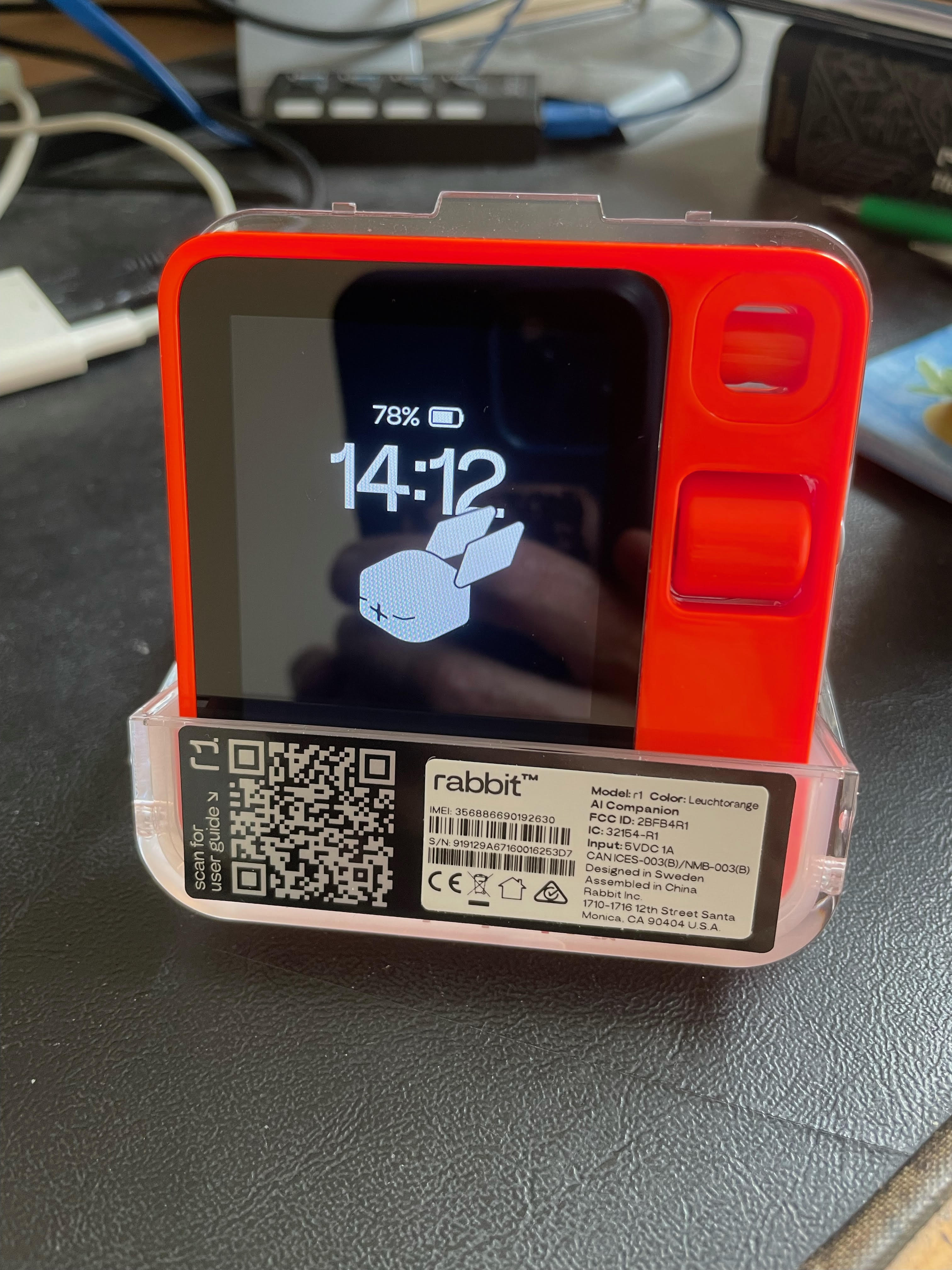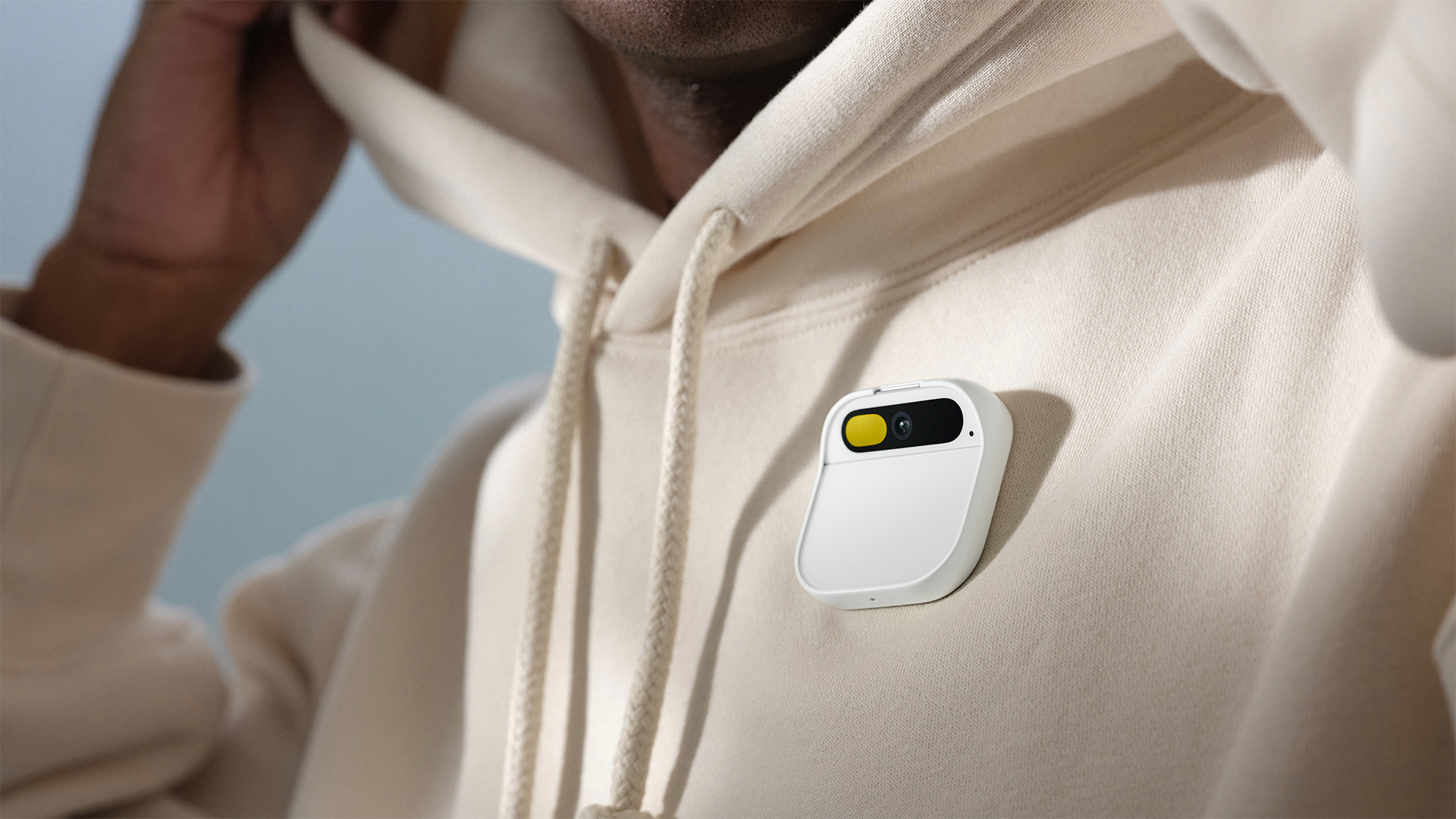
So former Apple design chief Jony Ive just sold IO, his stealth AI hardware startup, to OpenAI before anyone knew it existed. The move was announced with a bizarre video and a black-and-white photo of Jony and OpenAI CEO Sam Altman looking like they asked the latter's GPT image generator to put them on Simon and Garfunkel's Bookends album cover.
Immediately, there were headlines predicting danger for Ive's former employer. Apple's iPhones and MacBooks are about to be replaced by a revolutionary AI device, we're told. But don't blame me for being skeptical. After last year's flurry of 'alternative' hardware, we were ready to declare the AI gadget era the shortest-lived fad since NFTs until this week. Can IO really change things?
In case you missed the news, OpenAI is splashing out an estimated $6.5 billion in stock to buy IO, which was founded by Ive along with fellow Apple alumni Evans Hankey (his successor as Apple's head of design), Tang Tan (the former head of iPhone and Apple Watch design) and Scott Cannon.
Around 55 staff will head to OpenAI. Ive himself won't be among them, but his design company, LoveFrom, will work exclusively for OpenAI handling its design, including software.
If anyone can make an AI gadget a success, it should be the team of hardware and software engineers, technologists, physicists and product design experts that IO has assembled – and which Sam describes as the densest collection of talent that's "probably ever existed in the world". We're told the first IO device will launch in late 2026. But what will that look like?
The polished nine-minute launch video sees Sam and Jony head to a San Francisco cafe to tell the barista about their bromance and their love for the city and very little about what they're working on. That's led to frenzied speculation about what IO will make.
The Wall Street Journal cites an internal call at OpenAI in which the AI device is described as pocket-sized, screenless, aware of a user’s life and surroundings and "not a pair of smart glasses".
Altman has said the device is something totally new and "the coolest piece of technology that the world will have ever seen." That's a claim as bold as Elon Musk's suggestion that the Cybertruck would also be a boat.
Sam's probably right that AI requires a rethink of hardware, but the hype makes me dubious. Apple doesn't feel the need to tease experimental products. It keeps them under wraps. Even then, it still sometimes gets things wrong – Apple Intelligence spectacularly over promised and was rolled out before it was ready.

The generative AI revolution inspired product designers to predict that a new form of radically different device would replace the smartphones in our pockets and the laptops in our bags. The problem is that so far they have't worked well, and people haven't seen a need for them.
We really wanted to like the Rabbit R1, but our verdict in our review was that it was gimmicky gadget. It's still going, but I've not met anyone who isn't a tech journalist who;s used one.
Then there was the Humane AI Pin, a small, voice-controlled AI device that was supposed to be able to answer questions but often got the answers wrong. That was also the child of former Apple employees. The company sold out to HP and was shut down less than a year after launch, leaving its server-dependent devices practically useless.

Jony Ive is obviously aware of these flops. His argument in an interview with Bloomberg is that these were simply “very poor products" and that "there has been an absence of new ways of thinking".
A more promising area of AI hardware exploration has been smart glasses like the Ray-Ban Meta collaboration, Brilliant Labs' Frame and, announced just this week, Google's upcoming Android XR smart glasses to be made by eyewear brands Warby Parker and Gentle Monster. Apple is also rumoured to be working on Siri smart glasses.
Then there are home assistants, devices like LG's annoyingly cute robot dog, AKA the Self-Driving AI Home Hub, and the SenseCAP Watcher autonomous AI assistant, which looks like a Tamagotchi but can turn your TV and lights off when you fall asleep.
IO's device sounds like it could be a container for a more powerful agentic AI that accompanies you throughout the day, presumably with voice as the UI. But smartphones can also deliver AI assistance via voice UI, while also being phones (and cameras and entertainment devices, and the list goes on). A new form factor would need to provide some physical advantage.
OpenAI really wants to be Apple, and Sam really wants to be the new Steve Jobs, which might be why he's brought in Jony Ive. But when Jony designed the iMac, the iPod and the iPhone, he applied exquisitely simple user-friendly design to core technologies that already worked.
No matter how great IO's product is, the AI behind it needs to be up to the job. Considering that AI models can still get things so terribly wrong, it could easily be another flop that comes to market before it's ready.
What do you think? Can Sam and Jony do it and make an AI gadget the succeeds where others have failed? And what do you think it will look like? Let me know in the comments section below.







